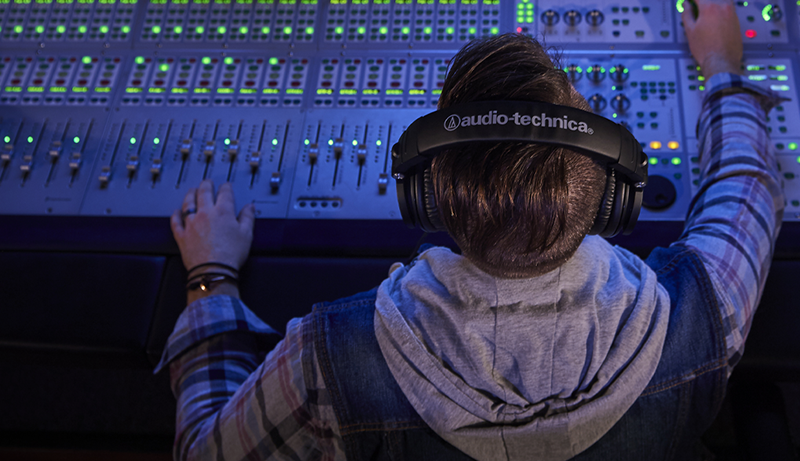It’s easy to think you need to spend thousands of dollars to get a quality gaming laptop. And while the top-tier models with the latest processors, cutting-edge graphics cards, and ultra-sleek designs can be pricey, you don’t have to break the bank for a solid gaming machine.
In fact, with a budget of $1,000 or less, you can still get your hands on a capable gaming laptop that can handle demanding titles like Alan Wake 2 and Baldur’s Gate 3. You might need to dial down the graphics settings a bit, but these games will still look impressive and run smoothly.
The key is knowing what to look for. In this guide, we’ll break down what matters when choosing a budget-friendly gaming laptop and highlight some of the best options available for under $1,000.
1. GIGABYTE G5
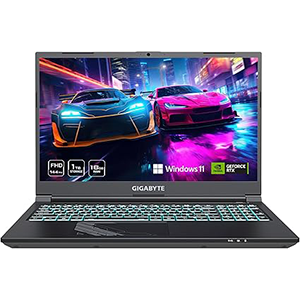
Beneath the Gigabyte G5’s modest exterior lies a surprisingly capable gaming laptop. It’s powered by an Intel i7-13620H processor and a GeForce RTX 4050 GPU — a combo that should handle games like Stalker 2: Heart of Chernobyl comfortably on medium settings. The 15.6-inch, 1080p display with a 144Hz refresh rate adds to the experience, delivering smooth, vibrant visuals that enhance fast-paced gameplay.
Performance-wise, the G5 doesn’t disappoint. It runs quietly and manages demanding titles with ease. The downside? Battery life is underwhelming — though, to be fair, that’s a common trade-off in gaming laptops, where you’ll typically need to stay plugged in for longer sessions. Aesthetically, it’s a little plain for my taste, but that’s a minor gripe considering what it offers for the price.
Pros:
- Well-balanced CPU, GPU, and display specs
- Quiet operation
Cons:
- Disappointing battery life
2. ASUS TUF Gaming F17
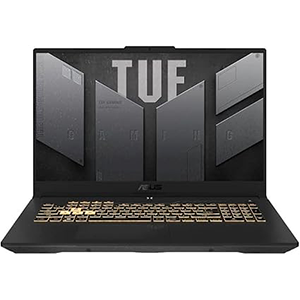
If you’re after a gaming laptop with a big, immersive display, the Asus TUF Gaming F17 deserves a spot on your shortlist. This value-packed machine is the larger sibling of the TUF F15, boasting a sizable 17.3-inch screen with slim bezels and a smooth 144Hz refresh rate — perfect for those who prefer gaming on a bigger canvas.
Under the hood, the F17 runs on a GeForce RTX 3050 and a 12th-gen Intel Core i5 processor. While these last-gen components won’t power through the latest AAA titles at max settings, they’re perfectly capable for indie hits, older favorites, and flexible games like Horizon Zero Dawn and Rocket League.
As you might expect from a laptop this size, battery life isn’t its strong suit, so you’ll want to keep the charger handy for extended play sessions.
Pros:
- Spacious 17.3-inch display with thin bezels
- Upgradeable RAM
Cons:
- Older CPU and GPU limit high-end performance
3. ASUS ROG Strix G15
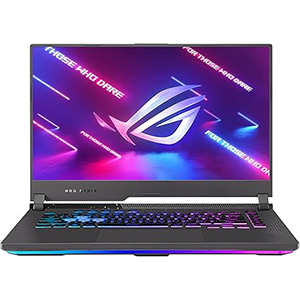
You’re bound to turn heads when you fire up the Asus ROG Strix G15. Its bold RGB light bar and illuminated keyboard give it loads of character, adding a splash of flair to an otherwise plastic-heavy build. It leans into its gaming identity with distinctive double hinges, an asymmetrical top panel, and a dotted design stamped with the Zephyrus logo.
Performance-wise, the Strix G15 packs a last-gen RTX 3050 GPU and Ryzen 7 CPU, which limits its ability to handle the latest AAA blockbusters. That said, it does feature a MUX switch — a handy addition that lets the GPU bypass the CPU and connect directly to the display, improving frame rates and reducing latency.
If your plan is to dive into demanding games like Helldivers 2 or Starfield, you’ll be better off with something sporting a newer GPU like the RTX 4060. But for less intensive titles like Disco Elysium or Sea of Stars, the Strix G15 delivers solid performance and looks sharp doing it.
Pros:
- Eye-catching RGB lighting
- MUX switch for better performance
Cons:
- Outdated CPU and GPU for modern AAA games
4. MSI Thin GF63
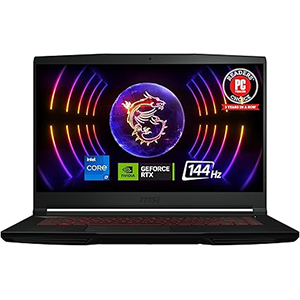
Weighing in at just over four pounds, the MSI Thin GF63 is a solid pick for students and gamers on the go. It’s a no-nonsense, budget-friendly laptop that delivers reliable performance thanks to its 12th-gen Intel Core i7 processor and Nvidia GTX 4050 GPU — a combo that can comfortably handle most modern games at 1080p.
Its understated black design with subtle red accents on the logo and keyboard keeps it looking professional enough for class or the office, so you won’t attract too much attention when it’s not in gaming mode.
Naturally, a lower price tag comes with a few trade-offs. The speakers lack punch, the display isn’t as bright as it could be, and the chassis tends to heat up during longer gaming sessions. Still, for a lightweight, portable rig packing a mid-range, current-gen GPU, there’s a lot to like.
Pros:
- Lightweight and easy to carry
- Strong CPU and GPU pairing
Cons:
- Runs hot under load
5. MSI Katana 15
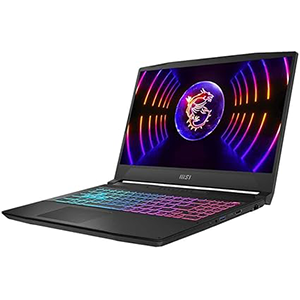
New to PC gaming? The MSI Katana 15 is an excellent entry point for console gamers and newcomers looking to get into the world of gaming laptops. It delivers reliable performance with its Intel Core i7-13620H processor and Nvidia GeForce RTX 4050 GPU, handling most modern games smoothly at 1080p.
The design leans simple, featuring an all-black chassis with one standout detail: ultra-bright translucent WASD keys on a backlit keyboard — a small touch of gamer flair on an otherwise understated build.
At nearly five pounds, it’s not the most portable option out there, so you’ll definitely feel it in your bag during commutes. That said, it still offers strong value for its price point, especially with the added benefit of Nvidia’s 40-series GPUs and DLSS technology, which helps boost frame rates in supported games.
Pros:
- Better-than-expected speakers
- Strong 1080p gaming performance
Cons:
- Display could be brighter
What to Consider
Buying a gaming laptop is an investment, and it’s important to choose one that not only meets your current needs but will stay reliable for a few years to come. The best way to figure that out is by checking the laptop’s specs — essentially a list of what’s inside the machine. If you’re new to this, don’t worry — we’ll break down the essentials and explain what really matters.
Thinking about stretching your budget? Check out our favorite gaming laptops under $1,500.
GPU (Graphics Card)
When it comes to gaming performance, no component matters more than the GPU — the graphics processing unit. It’s responsible for rendering the visuals you see in-game, from characters and environments to special effects.
There are two main players here: Nvidia and AMD. At this price point, Nvidia GPUs tend to be more common, while AMD often offers competitive performance at a slightly lower cost.
Nvidia’s naming system uses a four-digit number. The first two digits indicate the generation (10, 20, 30, or 40 series), while the last two represent the model’s performance tier — from the budget-friendly “50” models to the top-of-the-line “90” cards. For example, the RTX 4090 is Nvidia’s current powerhouse.
AMD uses a similar naming structure. The first number indicates the generation (5,000 to 7,000 series), with the 7-series being the latest. The second number reflects performance level. As of April 2024, AMD’s RX 7900M and 7900 XTX lead their lineup.
At the $1,000 mark, you’ll mostly find budget-tier cards like Nvidia’s RTX 4050 or 4060, and AMD’s RX 7600, alongside some older options like the RTX 3050 or 3060. If possible, prioritize a current-gen GPU — especially if your laptop has a larger screen where extra performance makes a noticeable difference.
CPU (Processor)
The CPU acts as your laptop’s brain, handling everything from running your operating system to managing game logic and physics while the GPU takes care of visuals.
Both Intel and AMD make excellent laptop processors. AMD’s CPUs typically offer better battery life and cooler operation, while Intel chips tend to edge out on raw performance.
In this budget range, you’ll usually find Intel Core i5 and AMD Ryzen 5 processors, which are perfectly capable for most games. If you want better future-proofing or plan to run newer, more demanding titles, look for a system with an Intel Core i7 or Ryzen 7 — though be prepared to spend a little extra or make compromises elsewhere.
Memory (RAM)
RAM, or random-access memory, temporarily stores data your system actively uses, like character models, game textures, and sound files. Having enough RAM helps your games run smoothly without frustrating stutters or slowdowns.
We recommend 16GB of RAM for a balanced gaming experience. While you’ll still find many budget laptops with 8GB of RAM, those can struggle with newer, resource-heavy games — especially open-world or multiplayer titles. If you start with 8GB, make sure it’s upgradeable later.
Display
Your laptop’s screen plays a huge role in your overall gaming experience. A good display makes your games look vibrant, crisp, and immersive.
Screen size is a key factor to consider. It affects not only how your games look but also how big and heavy your laptop will be. If portability is important, a 14-inch screen is great for on-the-go gaming. On the other hand, a 17-inch display offers a more cinematic experience but adds bulk and weight. The sweet spot for most gamers is around 15.6 to 16 inches — a nice balance between portability and immersive visuals.
Resolution is another important detail. Most budget gaming laptops feature a 1080p (Full HD) screen, which looks sharp and works well with mid-range GPUs. Some newer models may use a slightly taller 1200p (16:10 aspect ratio) display, offering a bit more vertical space.
Lastly, pay attention to the refresh rate — measured in Hertz (Hz) — which determines how many times your screen updates per second. A higher refresh rate makes games look smoother, especially in fast-paced shooters or action titles. Look for a laptop with at least a 120Hz refresh rate, though many budget gaming laptops now offer 144Hz displays as standard.




